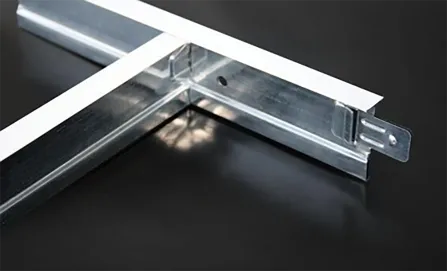- Afrikaans
- Albanian
- Amharic
- Arabic
- Armenian
- Azerbaijani
- Basque
- Belarusian
- Bengali
- Bosnian
- Bulgarian
- Catalan
- Cebuano
- Corsican
- Croatian
- Czech
- Danish
- Dutch
- English
- Esperanto
- Estonian
- French
- German
- Greek
- Hindi
- Indonesian
- irish
- Italian
- Japanese
- Korean
- Lao
- Malay
- Myanmar
- Norwegian
- Norwegian
- Polish
- Portuguese
- Romanian
- Russian
- Serbian
- Spanish
- Swedish
- Thai
- Turkish
- Ukrainian
- Uzbek
- Vietnamese
lis . 24, 2024 14:46 Back to list
Ceiling Access Panel Installation for Sheetrock Applications
Understanding Sheetrock Ceiling Access Panels
An essential component of modern construction and renovation, sheetrock ceiling access panels provide critical access to hard-to-reach areas within ceilings, such as plumbing, electrical components, or HVAC systems. These panels are commonly made from high-quality sheetrock (drywall) material, which assists in maintaining a uniform look throughout a building while offering practical functionality.
What is a Sheetrock Ceiling Access Panel?
A sheetrock ceiling access panel is a framed opening in the ceiling that is covered with a removable panel, made from gypsum board (sheetrock). These panels come in various sizes and styles, allowing builders and homeowners to choose options that best fit their needs while maintaining the aesthetic integrity of their interiors. The panel is often designed to blend seamlessly with the surrounding ceiling, minimizing disruptions to ceilings’ aesthetic appearance.
Importance of Access Panels
Access panels play a crucial role in maintaining the functionality of a building. They provide access to vital components such as electrical wiring, plumbing pipes, and HVAC ductwork without the need for extensive renovation or demolition. When maintenance is required, these panels enable quick access, which minimizes downtime and disruption to everyday activities.
Additionally, installing access panels during the initial construction phase can save time and costs associated with post-construction repairs, as access panels allow for easy inspection and maintenance of hidden infrastructure.
Types of Sheetrock Ceiling Access Panels
There are several types of sheetrock ceiling access panels available in the market, catering to various needs
1. Standard Access Panels These are the most common type and are typically utilized for general access to ceilings. They are easy to install and removable, facilitating quick access to utilities.
3. Insulated Access Panels These access panels offer additional thermal insulation, making them ideal for environments where temperature control is critical, such as within HVAC systems.
4. Security Access Panels Designed for sensitive areas, these panels come equipped with locks or other security features to restrict access and protect valuable infrastructure.
sheetrock ceiling access panel

5. Custom Access Panels For unique applications, many manufacturers provide customizable options to meet specific dimensions or design requirements.
Installation Process
The installation of sheetrock ceiling access panels is relatively straightforward, but special attention should be paid to ensure compatibility with the existing ceiling structure. The following steps provide an overview of the installation process
1. Determine Location Identify the area where access is required, taking care to consider potential obstructions like beams or electrical wiring.
2. Measure and Cut Based on the size of the panel, mark the dimensions on the ceiling. Use a drywall saw to carefully cut along the marked lines.
3. Install Frame If the access panel requires a frame, secure it to the ceiling joists or structure, ensuring it is level.
4. Attach the Panel Place the access panel onto the frame and secure it using the appropriate fasteners. Ensure that the panel sits flush with the surrounding ceiling.
5. Finishing Touches If desired, tape and mud the seams to disguise the edges of the panel or leave it visible for easier access in the future.
Aesthetic Considerations
While functionality is paramount, it’s essential to consider aesthetics as well. Many manufacturers offer access panels that can be painted or finished to match the surrounding ceiling. This consideration ensures that the presence of an access panel does not detract from the overall interior design.
Conclusion
Sheetrock ceiling access panels are invaluable assets in both residential and commercial spaces. They allow for necessary access to essential systems while maintaining a clean and uniform appearance in ceilings. Choosing the right type of access panel and ensuring proper installation can significantly extend the life of a building's infrastructure and ensure that maintenance can be conducted efficiently. Whether for new constructions or renovations, investing in quality access panels is an investment in the building's longevity and convenience.
-
Transform Interiors with PVC Gypsum Ceiling: A Stylish, Durable, and Moisture-Resistant SolutionNewsMay.19,2025
-
The Smart Interior Upgrade: Discover the Durability and Versatility of Gypsum Ceiling Access Panel SolutionsNewsMay.19,2025
-
The Smart Choice for Interior Design: Discover the Value of PVC Gypsum Ceiling SolutionsNewsMay.19,2025
-
Mineral Fiber Ceiling Tiles: The Smart Blend of Performance and AestheticsNewsMay.19,2025
-
Mineral Fiber Ceiling Tiles: The Superior Choice Over Gypsum for Sound and Fire SafetyNewsMay.19,2025
-
Mineral Fiber Ceiling Tiles: Eco-Friendly Strength and Style for Every CeilingNewsMay.19,2025







